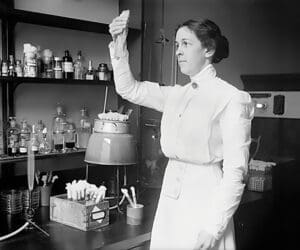By Patti Wilson, Contributing Editor

What is xylazine? In short, it’s a drug many of us will find on our vet supply shelf. We call it Rompun.
It’s a handy and potent sedative we once used, occasionally, when my husband and I ran a cow-calf operation for 45 years. As I recall, one 50-ml bottle lasted about 45 years. Due to the good nature of our cow herd, it was rarely employed. It was, however, indispensable on our ranch when a new mother would get overloaded on hormones and try to brutalize her offspring after calving. I think every cowman has seen this. One small dose of Rompun would provide a remarkable attitude adjustment, giving baby a safe opportunity to grab on to a teat. When the cow emerged from her dreams a few hours later, she was a loving mother. It never failed.
The veterinary use of Rompun in livestock is indispensable. Labeled for cats, dogs, sheep, horses, cattle, elk and several species of deer, its use extends from surgical sedative to humane field treatments.
A Short History
Xylazine is a clonidine analog. According to a January 2024 web article by NCBI Bookshelf, it was discovered by Farbenfabriken Bayer in 1962 in Germany, and promoted for use as an antihypertensive. Approval for human use was never granted for the drug; it was dangerously powerful as a blood pressure medicine and found to cause excessive depression of the central nervous system. It later emerged as a valuable sedative and muscle relaxant for veterinary use in the late 1960s and approved for use as a nonopioid tranquilizer. In addition, certain Alpha-2 antagonist drugs may be used to reverse the effects of xylazine in animals, increasing safety. In several species of livestock, the drug is completely eliminated in just 23 to 49 minutes.
Something Went Wrong
In the early 2000s, xylazine emerged as a popular illegal human drug in Puerto Rico. From 2002 to 2008, its use was associated with a high number of inmate deaths at the Guerrero Correctional Institution in Aguadilla, Puerto Rico. This may have been a starting point for the international drug trafficking of xylazine. From that point, users in Puerto Rico were mostly young males living in rural areas. Casual factors underlying the initial popularity of “tranq” are still unknown.
According to a March 21, 2023, article by Rachel Treisman on the NPR website, xylazine, or “tranq,” moved from the island nation to Philadelphia shortly thereafter. The city’s health department began seeing it in toxicology reports in 2006. Today, xylazine is found in more than 90 percent of drug samples tested in the city. In addition, the problem has grown to include the entire state of Pennsylvania, where drug overdose deaths have grown from 2 percent in 2015 to 26 percent in 2020.
Since, the National Institute of Health (NIH) reports overdose deaths linked to xylazine have spread westward across our nation, the Northeast being hit the hardest. As of last year, the U.S. Drug Enforcement Agency (DEA) reported it had seized mixtures of xylazine and fentanyl in 48 of 50 states. They consider it the deadliest drug threat the U.S. has ever faced.
How Is It Used?
Xylazine is often mixed with common illegal opioids like heroin or fentanyl. Cocaine and methamphetamines are also popular carriers. This is known as polysubstance use and complicates identification of overdose compounds as well as emergency treatment at the street level. Additionally, it mimics opioid effects, making diagnosis even more difficult.
The drug in liquid form reportedly is diverted from the veterinary market in Puerto Rico. The DEA reports a solid or powder form coming in from China, as well as other countries. The powder is primarily used as a cutting agent in street drugs to economically increase the bulk of those substances. It makes a profitable addition to the opioid supply. Researchers have found it is considered an unwanted adulterant in most cases.
Acute xylazine toxicity frequently occurs, badly affecting the central nervous system (CNS). It can also cause respiratory depression, low blood pressure and cardiac arrest. Most harrowing are the chronic complications of cumulative toxic effects, mainly wounds and ulcers on the arms and legs. Lower skin oxygenation is associated with impaired healing of these sores, leading to necropsy, while secondary infections quickly follow. Xylazine may be injected into muscles or veins, insufflated (inhaled or blown into a body cavity), ingested, or smoked. Anything goes. It is quickly absorbed and has a large volume of distribution, where the central nervous system and kidneys become rapidly concentrated.
Effects of the drug may begin within 12 to 14 minutes of administration and last 8 or more hours. It is rapidly metabolized by the liver and eliminated through urine. The NCBI Bookshelf website reports total elimination of xylazine from some animal models in 10 to 15 hours (no analysis has been done on humans). The heinous nature of this drug causes users to feel compelled to look for their next dosage while still high. Some users prefer Xylazine in combination with fentanyl because it prolongs the high.
The effect of fentanyl and xylazine combined have an additive impact on the CNS, making xylazine-laced fentanyl doubly dangerous. There are no human antidotes for the drug (such as Narcan for fentanyl) and no straightforward drug test. It is even more addictive than opioids, including fentanyl. There are no effective treatments for xylazine withdrawal or prolonged therapy for addiction. The necessity for limb debridement or amputation is high and mortality is common.
Why Does This Affect Livestock Producers?
In case you are not convinced of the serious nature of this conundrum, the Biden administration designated fentanyl combined with xylazine as an “emerging threat” to the United States. It allows the federal government to arrange resources to counteract the supply and use of the drug.
Xylazine abuse unfortunately puts veterinarians and livestock producers here in a big bullseye. In an effort to protect access to the legal use of Rompun for vets and their clients, the U.S. House of Representatives passed the Support for Patients and Communities Reauthorization Act, H.R. 4531, with strong bipartisan support. As of this writing, it was still awaiting Senate approval. It provides grants and other support for substance use prevention, treatment and recovery. The bill also protects the use of xylazine by veterinarians.
On a more practical note, Mark Turney, DVM, of Tennessee Ridge, Tenn., said in a recent interview that, if one is going to hold possession of a bottle of Rompun nowadays, it needs to carry a prescription label. Otherwise, you may be suspected of illegal possession of the drug. He commented that Rompun is an important and humane aid in livestock care and has concerns over possible government intervention in the drug’s future availability.
Final Thoughts
And that is the latest conundrum in which animal agriculture has become embroiled. Seems like there’s no end to our ongoing efforts to remain on the good side of modern society.





